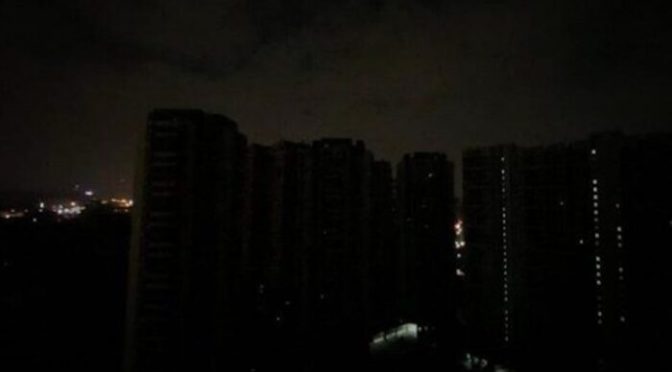
The Causes of China’s Power Shortages in December 2020
Provinces in central and eastern China have been suffering from power shortages in December. Many of us who watch China’s energy sector have been commenting for the last few years about the apparent excess generating capacity in China’s electrical power system. The surplus capacity has arisen from a combination of slowing economy and continued investment in new generating capacity of all types: thermal, hydro, nuclear, solar and wind. So, it came as a surprise when provinces in central and eastern China began to ration electricity supplies in early December. This rationing applied to industrial plants, factories, offices and street lighting. The residential sector appears to have been spared. The problem has since spread to southern provinces.
The many accounts in both the Chinese and international press and online commentaries have identified a large number of contributing factors. The principal one is the surge in economic activity. But one factor which has exacerbated the shortages, but is insufficiently addressed in most of these analyses, is the inadequacy of the infrastructure for transmitting electricity across the country.
As I and colleagues have explained elsewhere, China’s economic recovery plan in response to COVID-19 announced in May 2020 was not notably ‘green’. Indeed, other analysts have characterized it as distinctly ‘brown’. Regardless, economic growth has picked up in the third and fourth quarters of 2020 as factories and consumers make up for time lost in the earlier part of the year.
What has been particularly notable has been the surge in exports. This has resulted from a combination of the gradual recovery of international consumer demand and the closure of many factories around the world due to COVID-19. As a consequence, China’s export revenues in November 2020 broke all previous records and electricity demand rose 10% year-on year. This compares to a 6% increase year on year in the third quarter of 2020. In addition, the first two weeks of December saw unseasonably cold weather hit central and eastern China enhancing electricity demand further.
The power shortages arising from this accelerating power demand were of two types, real and artificial. The first was experienced in provinces such as Hunan and Jiangxi. Here, Chinese analysts have identified a number of factors. These included:
- A shortage of coal-fired generating capacity in the province due to the unwillingness of power companies to invests in unprofitable plants. Though average utilisation is said to be only 60-65%, the real problem is probably a shortage of capacity at peak times.
- The absence of a market for auxiliary services.
- A shortage of available hydro-electricity supply.
- A drop in the output of domestic coal mines due to environmental regulatory constraints and short-term suspension of production in some mines after an accident in Chongqing.
The issue of the embargo on Australian coal does not merit much attention in Chinese commentaries. This high quality coal accounts for just 3% of the coal used by Chinese power plants, though this share is higher in the richer coastal provinces.
Acknowledging the probable relevance of all these factors, it should still be possible to avoid power shortages by transmitting electricity from regions with excess capacity to those with a deficit. The principal problem in central China is a shortage of transmission lines. The planned Central China Ring Network of seven ultra-high voltage (UHVs) lines is intended to carry power from north and northwestern regions to the provinces of Henan, Hubei, Hunan and Jiangxi.
The first line from Shanxi in the north, across Henan to Hubei in the south, and was commissioned as a demonstration project in 2009. Construction of the other 6 projects was meant to start by late 2018 or 2019. However, as of December 2020 only one line, between the cities of Zhumadian and Nanyang, has been commissioned. This is not only the shortest of the six remaining lines, it is one of only two lines that lies within a single province (Henan). The other four lines cross provincial boundaries. In the meantime, construction on the five remaining lines has not started as they await final approval.
Reasons for the delay lie in the approval processes at provincial level relating to land acquisitions and environmental regulations. Concerns have also been raised over technical design as well as costs and investment efficiency. Finally, the COVID-19 pandemic may have delayed some of the on-site preparatory work.
Even when the UHV lines are all constructed, there may still be challenges sending electricity to central China, especially to address sudden power shortages. This is because the planning, dispatch and balancing of electricity supply takes place mainly at provincial level, and inter-provincial trading is agreed on an annual basis.
The case of Zhejiang Province is quite different, though the root cause of the power shortage also lies in the surge of economic activity and exports. The problem for government of Zhejiang is that it will fail to meet the targets set for the current five-year plan (2016-2020) to reduce both energy intensity and coal consumption. The provincial government has imposed electricity rationing on offices and factories in a last minute attempt to meet these goals. So the shortages here are more artificial than those in Hunan and Jiangxi, and are similar to those experienced at the end of earlier five-year plan periods when local governments took drastic measures to meet energy saving objectives.

